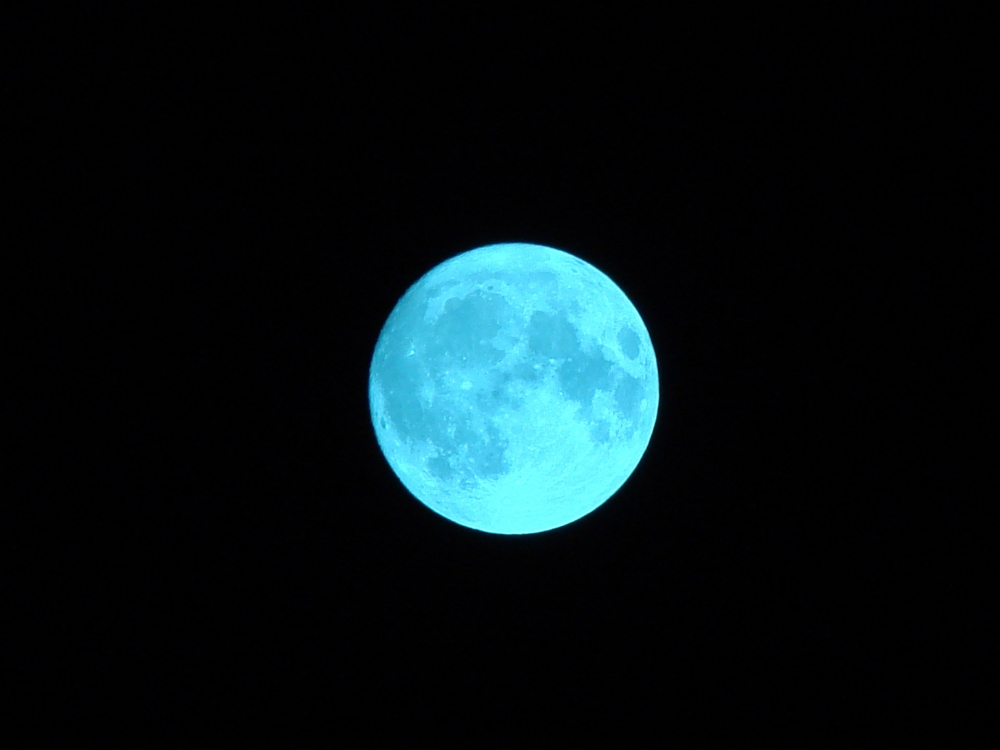A rare blue moon will be visible in the sky tonight for the first time in three years. The event coincides with the start of the meteor observing season which will peak in August with the Perseids meteor shower.
The phenomenon occurs when there is a second full moon in one calendar month. It is uncommon because the full moon cycle is 29.5 days.
Where is the best place to see it and at what time?
The blue supermoon is at its fullest during the daytime at 11.43am, but as the sun goes down it is best seen in the south where skies will be clearer. Rain clouds could block out the satellite further North.
It is also a ‘supermoon’ which occurs when the moon is at its closest approach to the Earth, known as perigee. It means the blue moon will appear especially big and bright.

People ride the Luna Park Swing Ride as the “supermoon” rises on Coney Island, USA.
Why is it called a blue moon? Is it really blue?
The first reference to a blue moon comes from a proverb recorded in 1528, according to the Oxford English Dictionary : If they say the Moon is blue, we must believe that it is true.
The infrequent nature of this lunar event led to the phrase “once in a blue moon” to signify a rare occurrence. It does not actually mean the moon will be blue.
The reason why the phenomenon is known as a “blue moon” is not certain, although according to one explanation the term means “betrayer moon” (“belewe” in Old English).
On other occasions the moon can actually take on a blue colouring but these are the result of ash spewed into the sky by volcanoes.
The first full moon was spotted on 1 July and the second will appear on the last day of the month – Friday, July 31.
This appearance is the first such occurrence in three years since the last blue moon month in August 2012, the next will not be until January 2018.
Astronomers predict it will only happen on 12 occasions between now and 2043.

The “supermoon” rises in Alabama, USA.
What will I be able to see?
Peter Drew, of the Astronomy Centre at Todmorden, Lancashire, said the sight is actually fairly “disappointing”.
“A blue moon occurs when two full moons can be seen in the same month of a given year.
“As the moon’s period is 28 days it is possible for this to happen in any month other than February which is too short a duration.
“Due to the moon’s orbit this phenomenon doesn’t happen every qualifying month so the occurrence is infrequent, the last one was on August 31, 2012.
“Needless to say, the moon will not appear blue, it’s the frequency that causes the interest.
“The moon at full is quite disappointing telescopically as the face on illumination by the sun drowns out the detailed features that usually make the moon such an awe-inspiring spectacle.”

The annual meteor season has just begun
When does the meteor observing season begin?
The Blue Moon marks the start of meteor season in Britain which runs through until January and peaks in August.
Already the first shooting stars from the Perseids meteor shower are visible, radiating from below the W of Cassiopeia.
The southern Delta Aquarids also peaked this week and the Alpha Capricornids will reach their maximum over the weekend.
Unfortunately, the peaks of these latter two showers are hit somewhat this year by the full moon of July 31.
Moonlight will also affect observations of the early Perseids – following full moon, the moon is very slow to move out of the evening sky and is also moving closer to the Perseid radiant.
From around Aug 7 onwards, however, the moon’s interference rapidly diminishes and it will be absent from the night sky for Perseid maximum (Aug 12-13).
(article from telegraph.co.uk)
